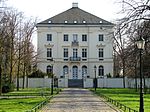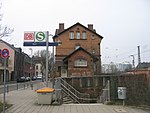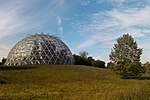Nievenheim station
North Rhine-Westphalia railway station stubsRailway stations in Germany opened in 1880Rhine-Ruhr S-Bahn stationsRhine-Ruhr S-Bahn stubsS11 (Rhine-Ruhr S-Bahn)

Nievenheim station is a station in the district of Nievenheim in the town of Dormagen in the German state of North Rhine-Westphalia. It is on the Lower Left Rhine Railway and it is classified by Deutsche Bahn as a category 6 station. The station was opened between 1880 and 1897.The station is served by line S 11 of the Rhine-Ruhr S-Bahn, running between Düsseldorf Airport and Bergisch Gladbach every 20 minutes during the day.It is also served by four bus routes operated by StadtBus Dormagen: 884 (at 60 minute intervals), 885 (60), 886 (30) and WE2 (60).
Excerpt from the Wikipedia article Nievenheim station (License: CC BY-SA 3.0, Authors, Images).Nievenheim station
Wilhelm-Zaun-Straße,
Geographical coordinates (GPS) Address Nearby Places Show on map
Geographical coordinates (GPS)
| Latitude | Longitude |
|---|---|
| N 51.123532 ° | E 6.782133 ° |
Address
Nievenheim
Wilhelm-Zaun-Straße
41542
North Rhine-Westphalia, Germany
Open on Google Maps







